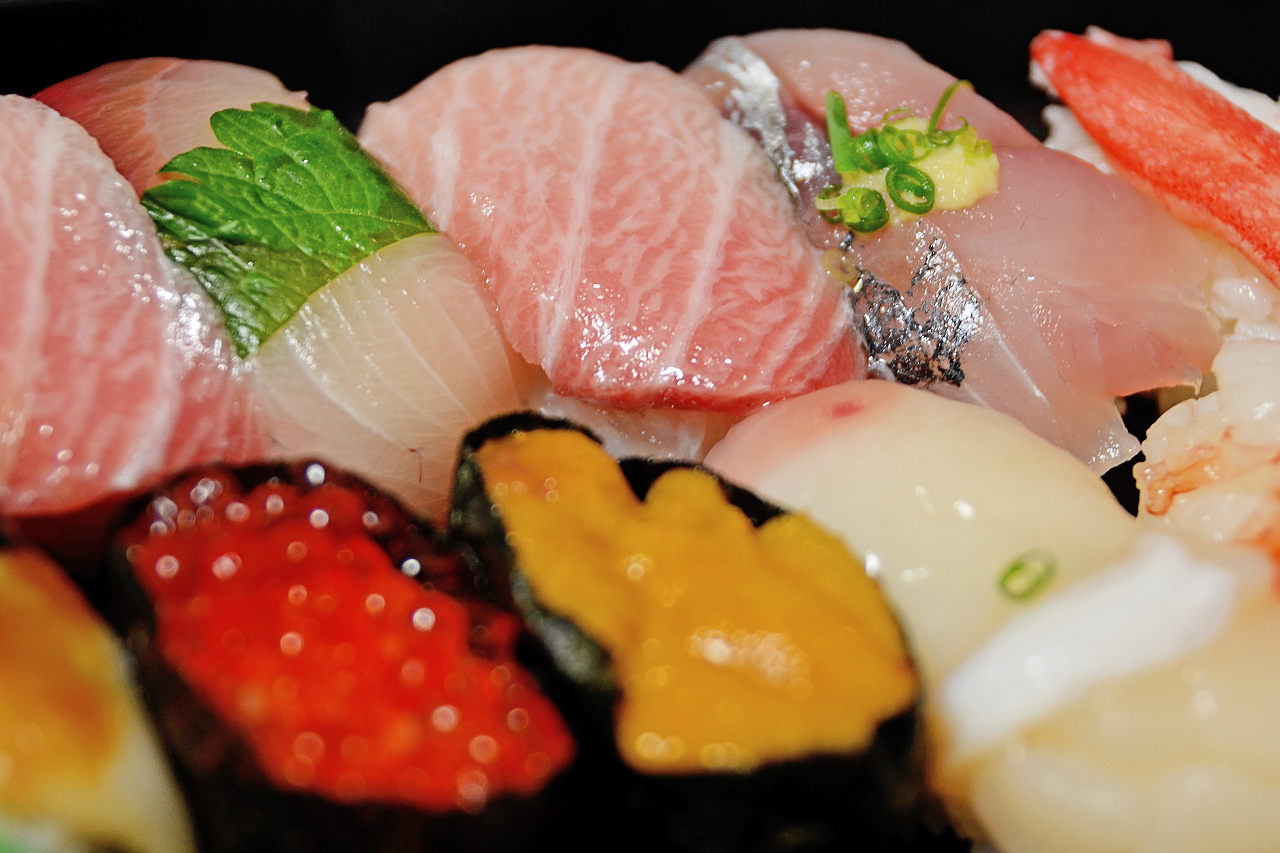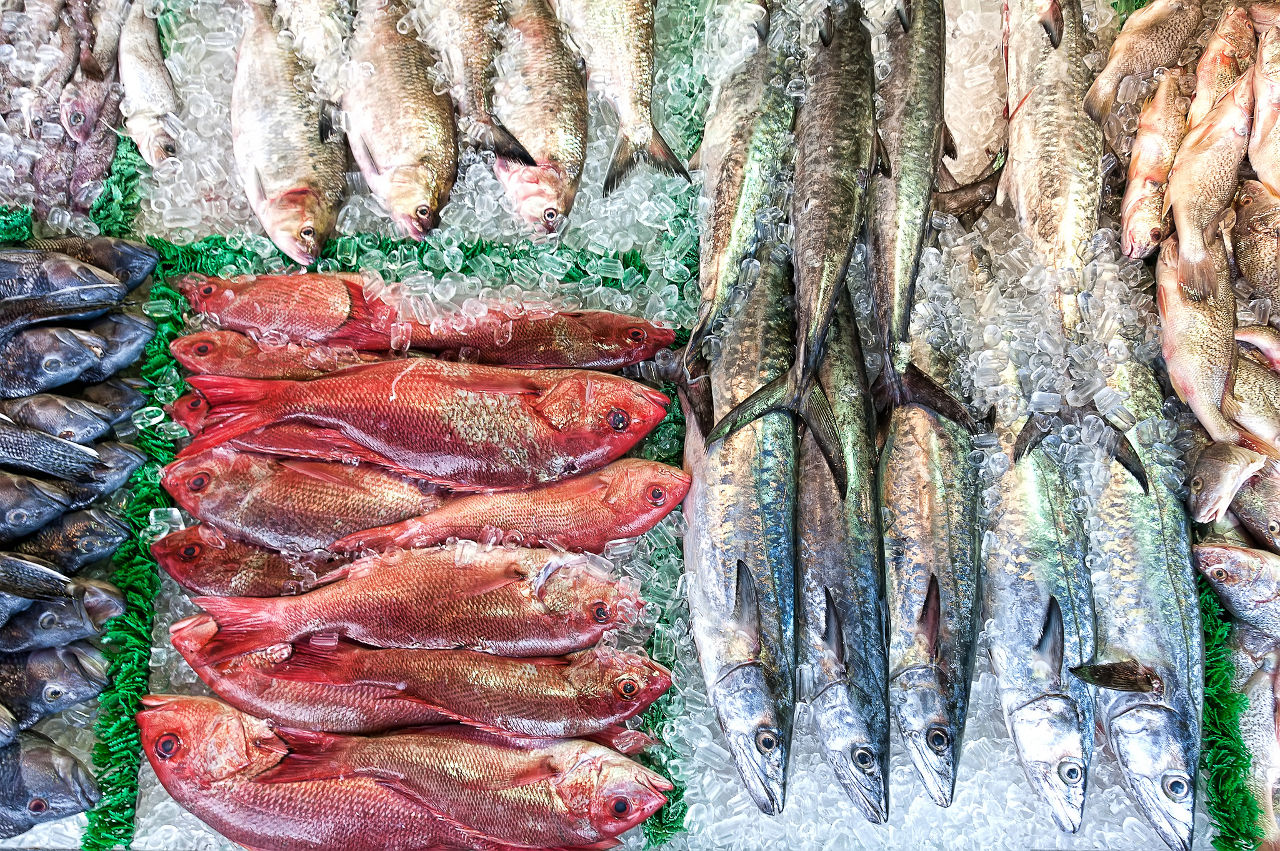Fish Fraud: This One Simple Tip Can Save You Money and Major Bathroom Woes
by Evelyn Reid
Originally published on About.com October 28, 2014
Fish fraud is not exactly a new phenomenon. Unscrupulous sellers have been mislabeling fish using the old bait and switch scam since time immemorial, fooling consumers into believing they’re buying a premium fillet when they’re actually being sold a cheap impostor. Mind you, that cheap impostor might actually taste good.
Escolar, a fish otherwise known as the ex-lax of the sea, springs to mind. It’s commonly used to “replace” more expensive albacore tuna, which might not seem like the biggest deal in the world, especially since it tastes all sorts of buttery wonderful. Not the worst scam in existence at all, unless you consider the fact that escolar is banned in some countries and restricted in others over concerns that the “explosive, oily, orange diarrhea” it inspires in select digestive systems might cause a problem for some people.
But escolar is so commonly used in lieu of tuna that in many circles, just the mention of “white tuna” is assumed to mean escolar. After all, seasoned seafoodies and sushi chefs both know that white tuna doesn’t exist in the first place, at least not in raw form.

In this photo: escolar served with clams. Looks expensive, no?
Photo by Flickr user stu_spivack
(CC BY-SA 2.0)
Top header photo by Flickr user Bill Dickinson
(CC BY-NC-ND 2.0)
Fish Scams: It’s Getting Harder to Game the System
So how common is fish fraud? It’s only over the last decade that regulators and investigators have been able to answer that question with any kind of objectivity courtesy of the advent of DNA sequencing technology instrumental in exposing the extent of seafood fraud.
Depending on which investigation consulted, anywhere from one third to one half of fish samples were reportedly mislabeled.
In the case of “white tuna,” a 2011 Boston Globe report found that every single one of the 23 samples tested were not tuna. Quebec’s Ministry of Agriculture, Fisheries and Food’s finding from earlier this year weren’t quite so dramatic but concerning nonetheless. Of 121 fish samples tested over a five-month period, the Ministry found 39 mislabeled. Of those, 15 were believed to be English-to-French translation errors and the other 24 were judged to be deliberate misrepresentations.

Photo by Epicurrence via Unsplash
How Can Consumers Protect Themselves?
Until routine DNA testing is put in place to deter this kind of behaviour, consumers are left to fend for themselves. So what can you do to protect yourself? Canadian consumer watchdog Marketplace recommends buying fish whole: “once they’re skinned and filleted many fish look the same. To know exactly what you are getting consider buying whole fish with the skin and head on, look for bright clear eyes and shiny skin.”
Great advice for smaller fish, but good luck scoring a whole bluefin tuna, which averages 8 feet long. Then again, you might want to lay off bluefin anyway. It was overfished for decades and has only recently started to recover. But even if you buy fish whole, you’re going to need to take a crash course in fish anatomy to notice the fine details that differentiate various species.
And what about when eating out? How are the average Jane and Joe supposed to determine if their fish order is the real deal? And what if the cheap substitute is loaded with mercury? It’s been known to happen. That kind of bait-and-switch can be dangerous for children and pregnant women.
Montreal sushi chef Terence Ting of Kyo Iazakaya offers a simple, easy-to-remember piece of advice if mercury levels are a concern or if the very thought of explosive diarrhea strikes fear in the heart of your bowels. But he also cautions consumers not to expect the worst of fishmongers and sushi chefs if some mislabeling does happen. Sometimes, a mislabeled fish isn’t so much an attempt to make a buck off a buyer’s back as it is a reflection of cultural and geographic differences.

Photo by Flickr user Toshihiro Gamo (CC BY-NC 2.0)
Red snapper in Japan, for example, is actually sea bream. But to the Japanese, red snapper is red sea bream. Both fish are within a similar price range too so it’s not like anyone is making a grandiose profit from the mislabeling.* Another consideration is trust. “Here at Kyo? Our supplier? It’s been ten years that I deal with him,” explains Ting.
But what if all the reassurances in the world still don’t comfort consumers?
Ting reveals what’s possibly the easiest tip of all to follow, “if you’re terrified of eating the wrong fish, don’t order white fish, stuff like red snapper, bass, or sea bream. Why those? Because when you cut them up and fillet them, they look exactly the same, like any other white fish.”
—
*In Japan, red sea bream (aka porgy) is commonly called red snapper. But the FDA does not allow sea bream to be called red snapper in the United States, which leads to confusion at the sushi counter if say a Japanese chef born, raised, and trained in Kyoto refers to red sea bream as “Japanese red snapper” on the menu. The price difference between the two fish is not outrageous either. Consumers should however cry fraud if tilapia is used in lieu of red snapper since the former is one fifth of the price. A Toronto Star investigation revealed that sushi counters passing off tilapia as red snapper sold it at a fairly reasonable range compared to the what actual red snapper or sea bream would cost. But that ”reasonable” price was much higher than tilapia’s going rate.
Fish Fraud: This One Simple Tip Can Save You Money and Major Bathroom Woes
by Evelyn Reid
Originally published on About.com 22 March, 2016

Photo by Flickr user Bill Dickinson (CC BY-NC-ND 2.0)
Fish fraud is not exactly a new phenomenon. Unscrupulous sellers have been mislabeling fish using the old bait and switch scam since time immemorial, fooling consumers into believing they’re buying a premium fillet when they’re actually being sold a cheap impostor. Mind you, that cheap impostor might actually taste good.
Escolar, a fish otherwise known as the ex-lax of the sea, springs to mind. It’s commonly used to “replace” more expensive albacore tuna, which might not seem like the biggest deal in the world, especially since it tastes all sorts of buttery wonderful. Not the worst scam in existence at all, unless you consider the fact that escolar is banned in some countries and restricted in others over concerns that the “explosive, oily, orange diarrhea” it inspires in select digestive systems might cause a problem for some people.
But escolar is so commonly used in lieu of tuna that in many circles, just the mention of “white tuna” is assumed to mean escolar. After all, seasoned seafoodies and sushi chefs both know that white tuna doesn’t exist in the first place, at least not in raw form.

Above: escolar served with clams. Looks expensive, no? (Photo by Flickr user stu_spivack (CC BY-SA 2.0))
Fish Scams: It’s Getting Harder to Game the System
So how common is fish fraud? It’s only over the last decade that regulators and investigators have been able to answer that question with any kind of objectivity courtesy of the advent of DNA sequencing technology instrumental in exposing the extent of seafood fraud.
Depending on which investigation consulted, anywhere from one third to one half of fish samples were reportedly mislabeled.
In the case of “white tuna,” a 2011 Boston Globe report found that every single one of the 23 samples tested were not tuna. Quebec’s Ministry of Agriculture, Fisheries and Food’s finding from earlier this year weren’t quite so dramatic but concerning nonetheless. Of 121 fish samples tested over a five-month period, the Ministry found 39 mislabeled. Of those, 15 were believed to be English-to-French translation errors and the other 24 were judged to be deliberate misrepresentations.

Photo courtesy of the University of Michigan School for Environment and Sustainability
How Can Consumers Protect Themselves?
Until routine DNA testing is put in place to deter this kind of behaviour, consumers are left to fend for themselves. So what can you do to protect yourself? Canadian consumer watchdog Marketplace recommends buying fish whole: “once they’re skinned and filleted many fish look the same. To know exactly what you are getting consider buying whole fish with the skin and head on, look for bright clear eyes and shiny skin.”
Great advice for smaller fish, but good luck scoring a whole bluefin tuna, which averages 8 feet long. Then again, you might want to lay off bluefin anyway. It was overfished for decades and has only recently started to recover. But even if you buy fish whole, you’re going to need to take a crash course in fish anatomy to notice the fine details that differentiate various species.
And what about when eating out? How are the average Jane and Joe supposed to determine if their fish order is the real deal? And what if the cheap substitute is loaded with mercury? It’s been known to happen. That kind of bait-and-switch can be dangerous for children and pregnant women.
Montreal sushi chef Terence Ting of Kyo Izakaya offers a simple, easy-to-remember piece of advice if mercury levels are a concern or if the very thought of explosive diarrhea strikes fear in the heart of your bowels. But he also cautions consumers not to expect the worst of fishmongers and sushi chefs if some mislabeling does happen. Sometimes, a mislabeled fish isn’t so much an attempt to make a buck off a buyer’s back as it is a reflection of cultural and geographic differences.

Photo by Clem Rutter (CC-BY-SA-2.5)
Red snapper in Japan, for example, is actually sea bream. But to the Japanese, red snapper is red sea bream. Both fish are within a similar price range too so it’s not like anyone is making a grandiose profit from the mislabeling.* Another consideration is trust. “Here at Kyo? Our supplier? It’s been ten years that I deal with him,” explains Ting.
But what if all the reassurances in the world still don’t comfort consumers?
Ting reveals what’s possibly the easiest tip of all to follow, “if you’re terrified of eating the wrong fish, don’t order white fish, stuff like red snapper, bass, or sea bream. Why those? Because when you cut them up and fillet them, they look exactly the same, like any other white fish.”
—
*In Japan, red sea bream (aka porgy) is commonly called red snapper. But the FDA does not allow sea bream to be called red snapper in the United States, which leads to confusion at the sushi counter if say a Japanese chef born, raised, and trained in Kyoto refers to red sea bream as “Japanese red snapper” on the menu. The price difference between the two fish is not outrageous either. Consumers should however cry fraud if tilapia is used in lieu of red snapper since the former is one fifth of the price. A Toronto Star investigation revealed that sushi counters passing off tilapia as red snapper sold it at a fairly reasonable range compared to the what actual red snapper or sea bream would cost. But that ”reasonable” price was much higher than tilapia’s going rate.




